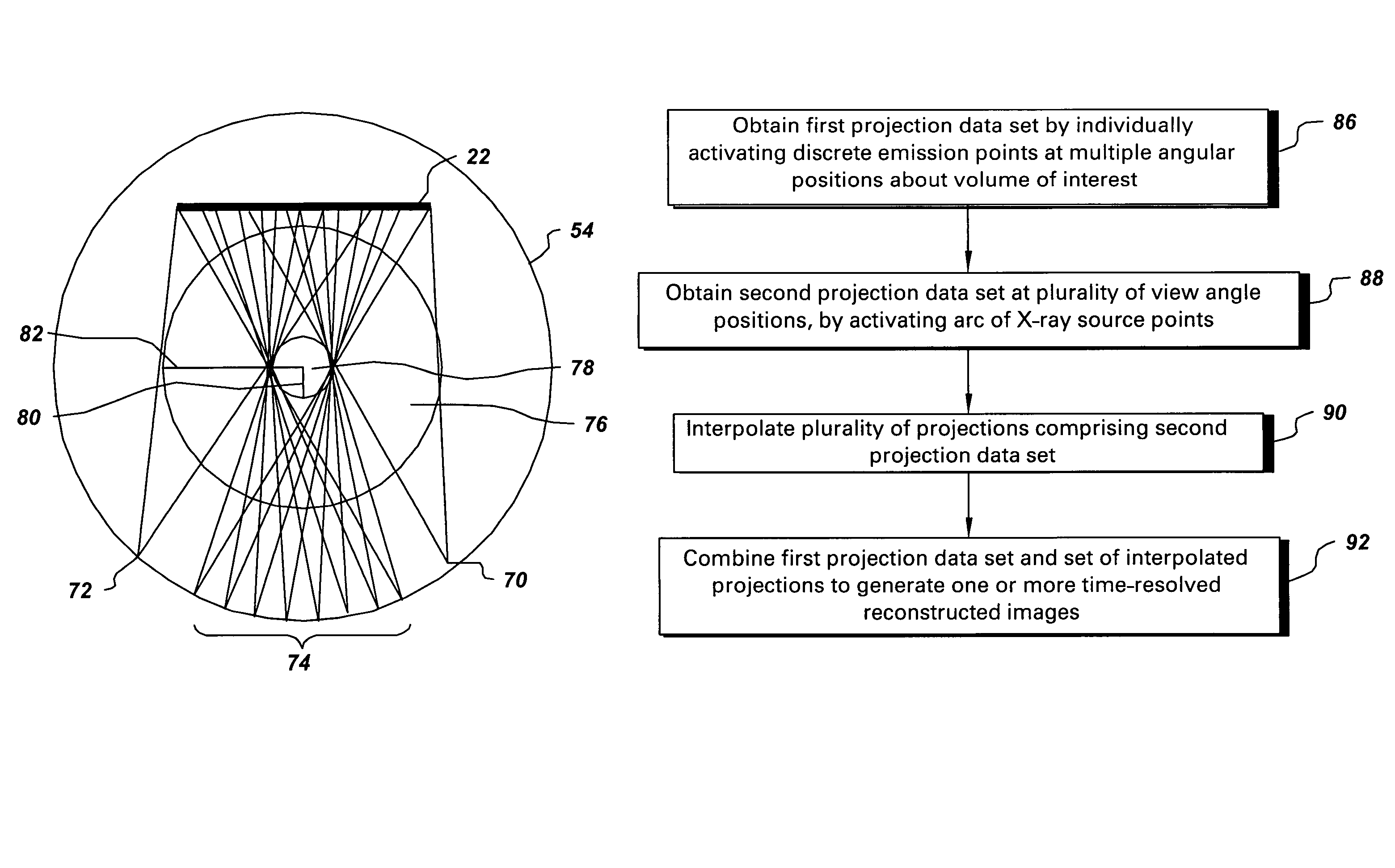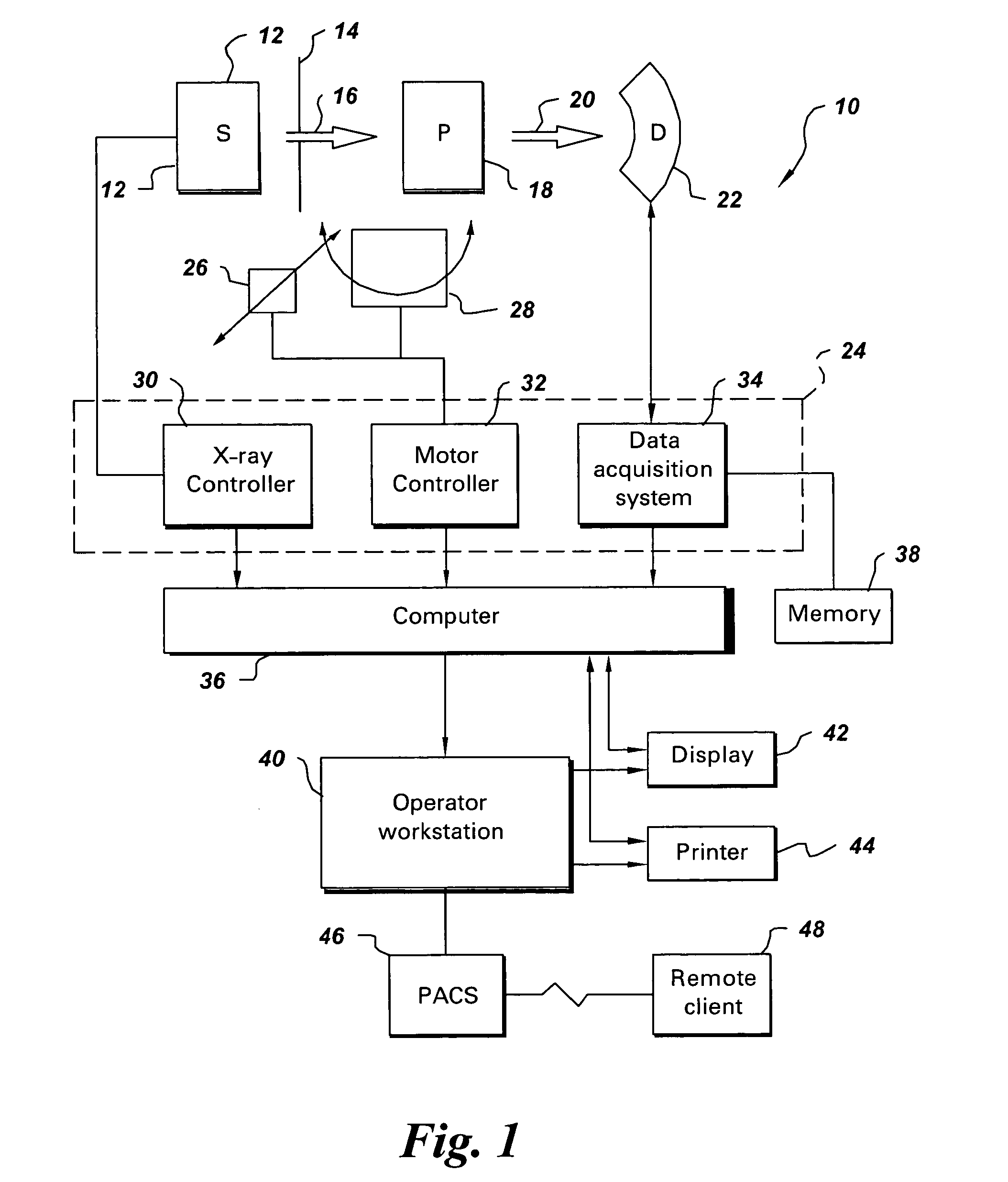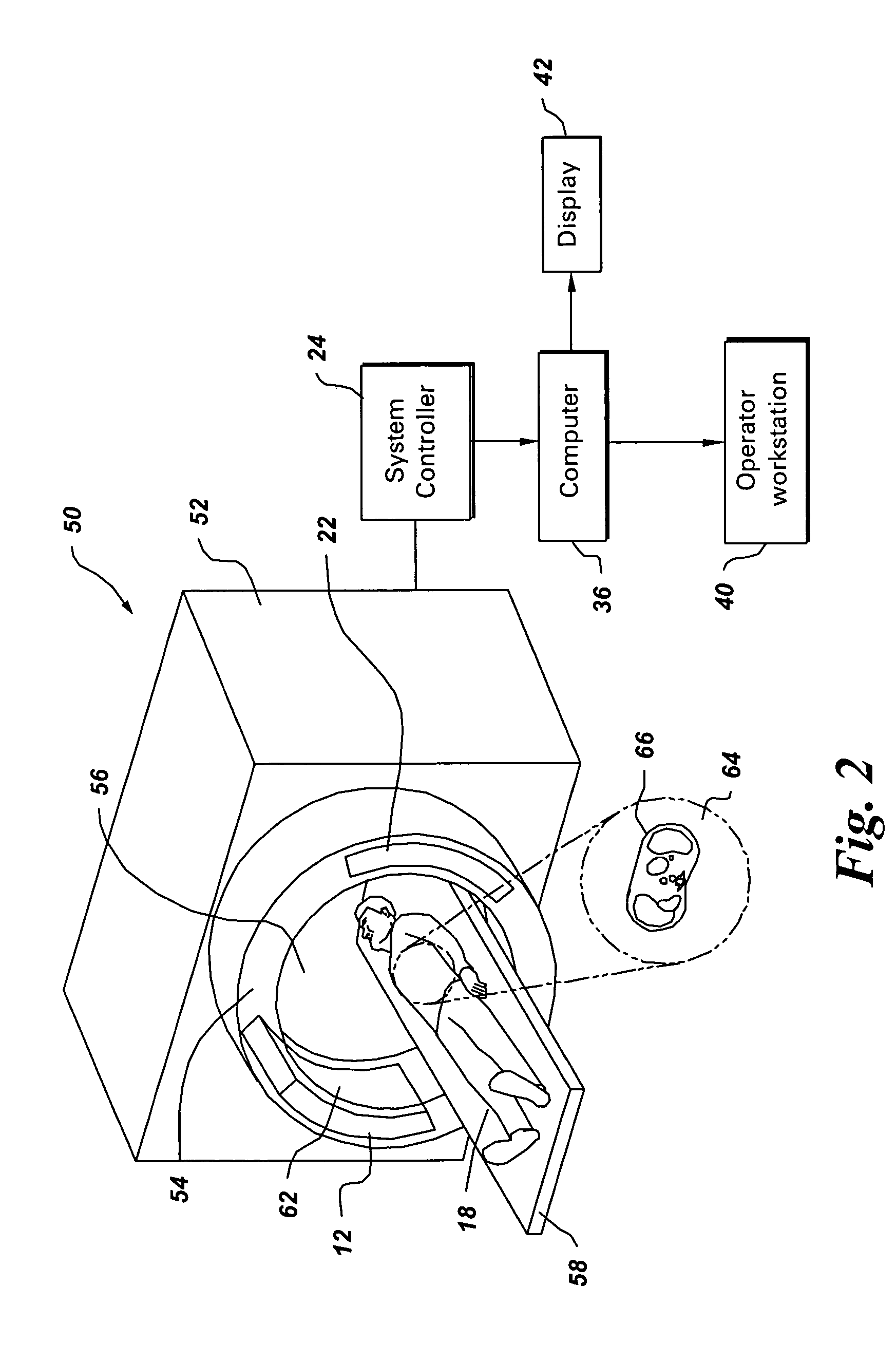Method and system for CT imaging using a distributed X-ray source and interpolation based reconstruction
a distributed x-ray source and reconstruction technology, applied in tomography, instruments, applications, etc., can solve the problems of various motion-related image artifacts, blurring, streaking, and discontinuities of ct imaging techniques,
- Summary
- Abstract
- Description
- Claims
- Application Information
AI Technical Summary
Benefits of technology
Problems solved by technology
Method used
Image
Examples
Embodiment Construction
[0020]FIG. 1 illustrates diagrammatically an imaging system 10 for acquiring and processing image data, in accordance with one aspect of the present technique. In the illustrated embodiment, system 10 is a computed tomography (CT) system designed to acquire X-ray projection data, to reconstruct the projection data into an image and to process the image data for display and analysis in accordance with the present technique. Though the imaging system 10 is discussed in the context of medical imaging, the techniques and configurations discussed herein are applicable in other non-invasive CT imaging contexts, such as baggage or package screening.
[0021]In the embodiment illustrated in FIG. 1, the CT imaging system 10 includes a distributed source 12 of X-ray radiation positioned adjacent to a collimator 14. As described herein, the CT imaging system 10 may be configured in a variety of ways to improve spatial and temporal resolution, to improve image quality, and / or to improve longitudin...
PUM
| Property | Measurement | Unit |
|---|---|---|
| rotation time | aaaaa | aaaaa |
| rotation time | aaaaa | aaaaa |
| fan angle | aaaaa | aaaaa |
Abstract
Description
Claims
Application Information
 Login to View More
Login to View More - R&D
- Intellectual Property
- Life Sciences
- Materials
- Tech Scout
- Unparalleled Data Quality
- Higher Quality Content
- 60% Fewer Hallucinations
Browse by: Latest US Patents, China's latest patents, Technical Efficacy Thesaurus, Application Domain, Technology Topic, Popular Technical Reports.
© 2025 PatSnap. All rights reserved.Legal|Privacy policy|Modern Slavery Act Transparency Statement|Sitemap|About US| Contact US: help@patsnap.com



